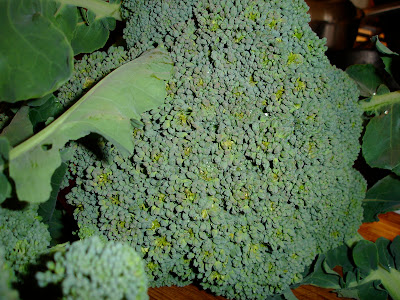
One of our faithful layers is sick. She's listless and puffed up, definitely not acting the part of a healthy forager like the rest of her kin. This is not new to her; she fell ill on New Year's weekend just a month and a half ago. Her symptoms then seemed more severe. She wouldn't stop drinking water, and was again listless and puffed up. A call to the local veterinarian's office yielded the holiday on-call veterinarian who know less than I about poultry. They proffered the phone number of University of California Davis that has a poultry veterinarian. Really? On a holiday weekend? Sure enough they answered the phone and after I described the worsening symptoms the young voice on the other end informed me that it was serious and I needed to bring her right in. Really? 5 hours drive for a sick young layer? I don't think so. When I declined the generous offer and pressed for at least a little over-the-counter advice, the actual vet call me back a bit later. During the high anxiety wait, I combed the internet (oh yes
I know one normally "surfs" the internet, but "combs" it for chicken information...it's apropos as well as anatomically correct). Some obscure blogs and poultry forums gave me a few ideas and upon sticking a nose to her open beak and smelling her sourly fermented breath, she was most assuredly the victim of an impacted crop. Apple cider vinegar, force-fed yogurt, and a crop massage while she was upended (suspended from Cosmo Bean's lap upside-down) seemed to help and by the third day she was back with the pack, indiscernible from her sister leghorns.
But it seems her 'crop failure' has returned, again on a holiday weekend. Perhaps she's allergic to holidays. More likely she ingested something rancid during the moving of the compost, or her crop is weakened from her new year's weekend incident and now is more susceptible to becoming easily bound. We do have quite a lot of high grass that could also be the cause. Whatever the case, we hope she makes a quick and full recovery. These episodes have fostered much more knowledge about a chicken's anatomy whereas prior to the advent of the year 2011 I thought a crop was something that sprung verdantly en masse from the earth or a little stick to goad on a horse. Add one more definition: The storage pouch for food on a chicken before it enters the stomach. Interestingly enough the crop evolved in chickens and other birds that are easy prey to other animals so that they can quickly forage in open spaces and fill it up then get to safety then digest it's food later (this according to the University of Kentucky Agricultural Extension).

Meanwhile more chicken antics ensue. Yesterday we got our second batch of little poults. Now our miniature flock is 8 and consists of: 2 Giant White Cochins, 2 Buff Orpingtons, 2 Delawares, and 2 Bantam Silkies (one white, one black). It's chaos in that little tub right now. The 4 chicks we adopted last weekend are behemoths compared to the newbies. They've sprouted tail and wing feathers and tramp all over the littler ones. The teeny black silkie elicits "oohs" and "aahs" from every visitor. We've been on pasty vent cleaning duty relatively often since we've gotten them. The stress of being cargoed half way across the nation probably is to blame. In fact our cochins are two of only a handful that lived through the shipping experience, the rest succumbing to asphyxiation. The person at the poultry farm neglected to cut air vents in the box, a deadly mistake. I pity Tom from A&L Feed who had the distinct displeasure of opening that package at the Post Office. We're still hoping to get some Americaunas and Marans to round out the egg color.

Our dogs are an interesting dichotomy when it comes to chickens. Cosmo is the perennial hunter and is as obsessed with the chicks as he is with the chickens. Riley on the other hand has assumed the role of chicken sitter, mother hen, or shepherd, you can decide what to call him. He lays by those babies day and night and growls and barks Cosmo right out of the room. I've never seen Cosmo stand down to Riley until now. Evidently he is serious about his self-appointed stewardship. He's even gone so far as to chase Cosmo completely out of the house.

















































